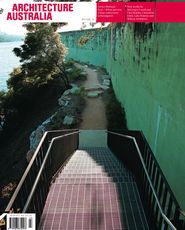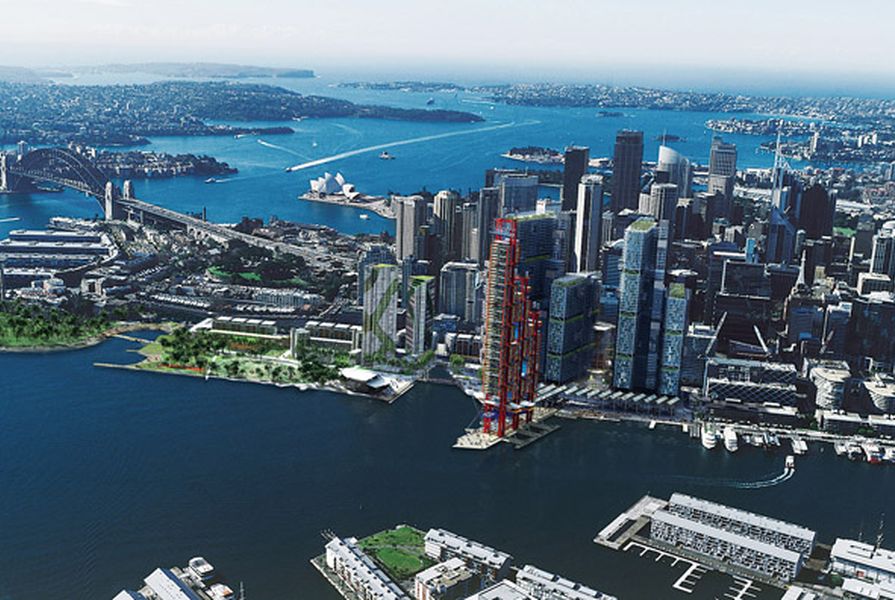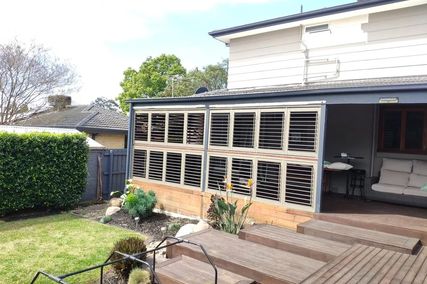Barangaroo offers a once-in-a-generation opportunity to dramatically increase public engagement with Sydney Harbour. It’s a major missing link in the chain of sites providing permanent public access to the foreshore of Sydney’s greatest asset. Whatever else happens at Barangaroo, public access to the harbour must not be compromised. The Australian Institute of Architects believes this is a foundation principle. It is the job of the NSW Government to protect it in the public interest.
It has been difficult to develop the Institute’s view on the proposal for the future of this remarkable site because of the debate within the profession surrounding the procurement process. We acknowledge the involvement of distinguished members of the architectural profession in juries, review panels and as potential designers of some of the elements of the exhibited proposal. The following comments in no way reflect on their roles, but instead on the process itself. We also confine ourselves to the Stage 1 proposal, which the Government contracted Lend Lease to develop in February 2010.
Open debate has not been possible until now because of the necessarily commercial in-confidence planning and financial negotiations that have taken place with the competing proponents. Now that a successful tenderer has been chosen, even contracted to carry out the work, access to information should no longer be an issue. There should be reporting on the financial outcome and the opportunity to understand why Lend Lease’s winning bid was successful.
The Institute believes that the present proposal to sell the rights for the development of Barangaroo to a single private sector organization involves significant risk. What is needed at Barangaroo is natural city growth; the public needs to be assured that the outcome will be a diverse and exciting new city fabric, a world leader in design and sustainability, generous and inviting public spaces – and full access to the harbour.
The Institute acknowledges that the engagement of the private sector is a necessary step in the evolution of our cities. Private organizations must inevitably balance the cost-benefit equation in their own interests and those of their shareholders. The government needs to fulfil its responsibility as an informed client and advocate for the public interest by defining the broad scope of the project, rather than leaving this critical step to a development tender.
The Institute believes that government should provide a masterplan with a clear framework of streets, squares and parks that are designed for the people of NSW, not the interests of any single developer. Public infrastructure and public space should be clearly defined and delivered early, as occurs in many other First World cities. There should be no ambiguity of public and private space and no privatization of the harbour. The masterplan should create and protect views and connections to and from the city; it should come replete with a transport strategy.
We are advised that the Barangaroo Delivery Authority gave the highest priority to the public domain in negotiating the successful outcome to the tender process – as it should have done. But the information on display at the public exhibition of the scheme following the signing of the contract left an enormous gap in our ability to understand what is private and what is public. What are the decisions that have been made to safeguard the public interest? How can the premier endorse the winning proposal if the public domain benefits it delivers are so unclear?
More questions. Was a government-led strategy passed over in the attempt to secure a good financial offer in the throes of the global financial crisis? Has the public interest been served in taking this path? Have we got the best design? Indeed, have we got a design, or yet another cog in the ramping up of the floor space for the site? There are so many unanswered questions – and we are assured all will be forthcoming in the (legally) requisite time frames, and that the amended concept plan submission to the Department of Planning will have all the detail one would expect. We look forward to reviewing the scope and detail of this plan and subsequent development applications.
But the most important question remains: if this site is to produce lasting public benefits, why has the government not taken a more active and direct role in delivering them, or at least explained its position more clearly, particularly in relation to the public domain?
Source

Discussion
Published online: 2 May 2010
Words:
Brian Zulaikha
Issue
Architecture Australia, May 2010
















